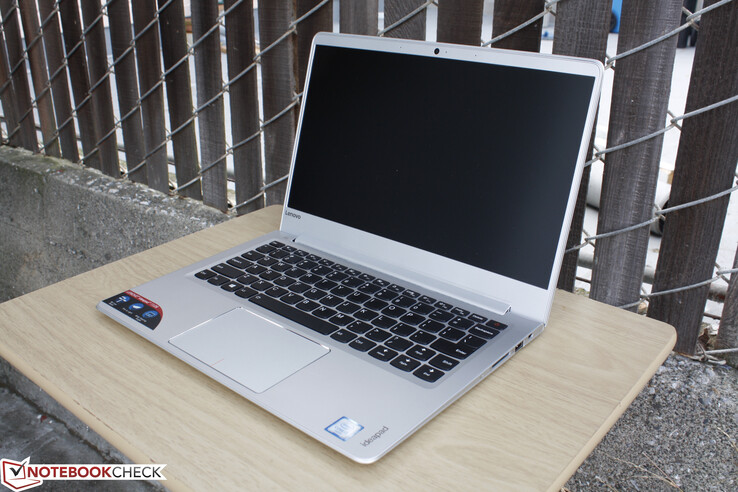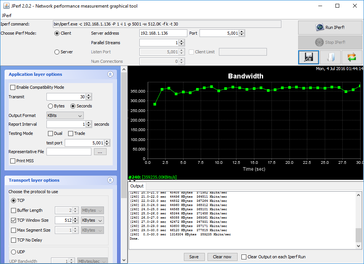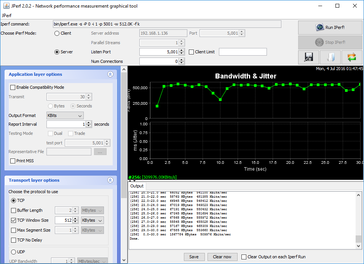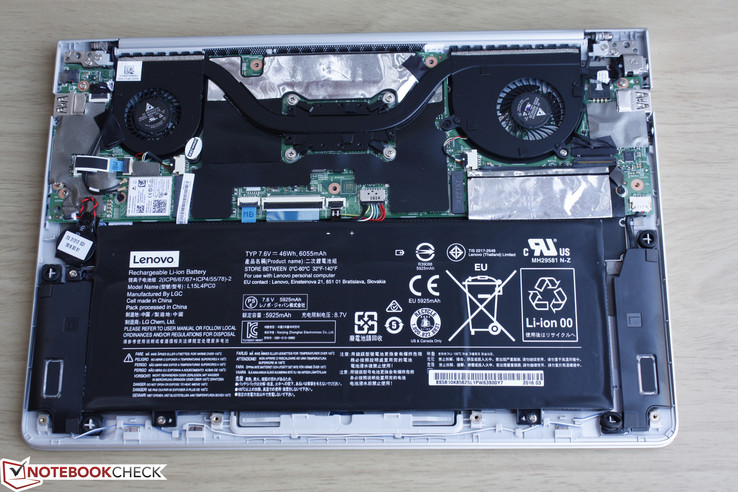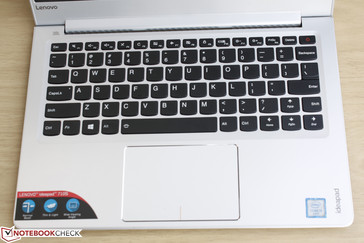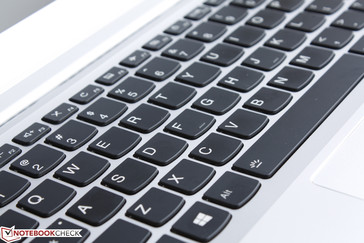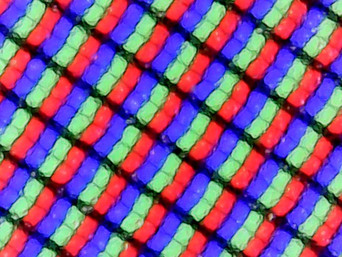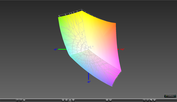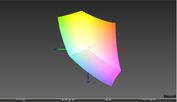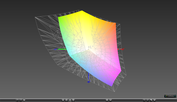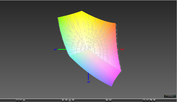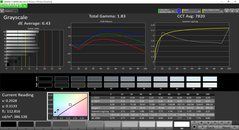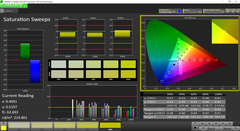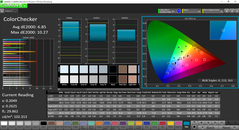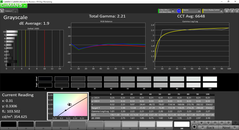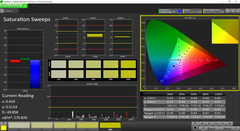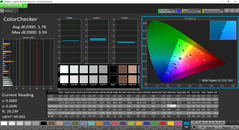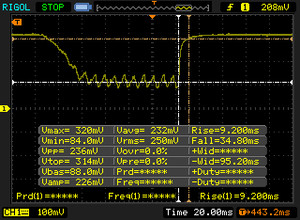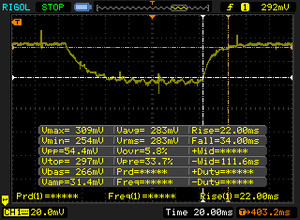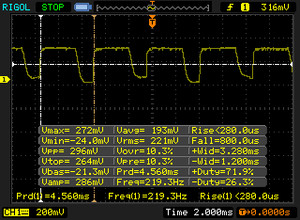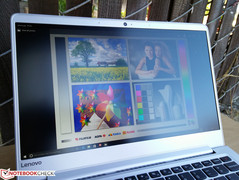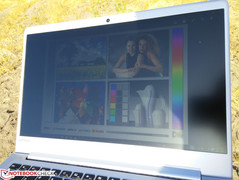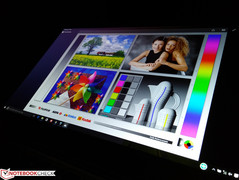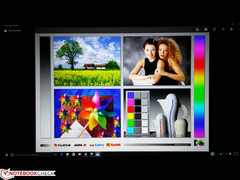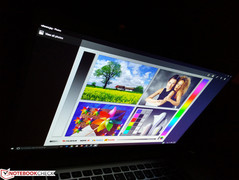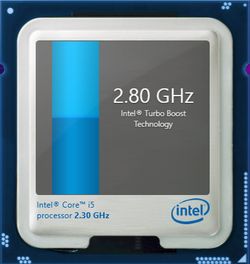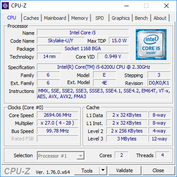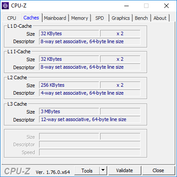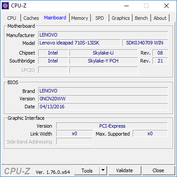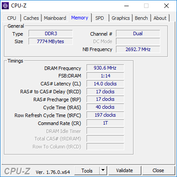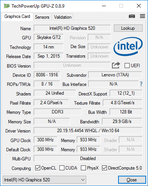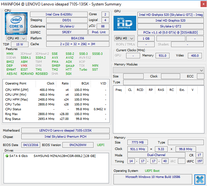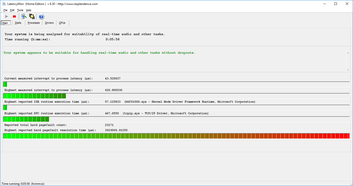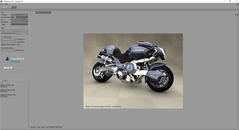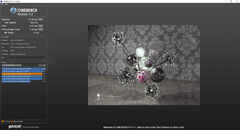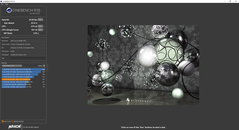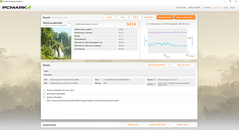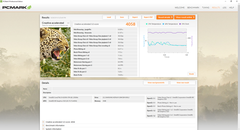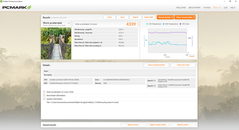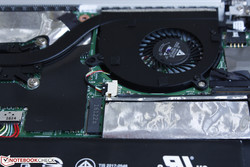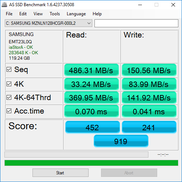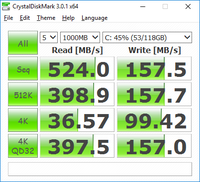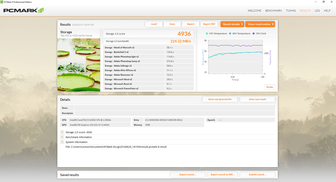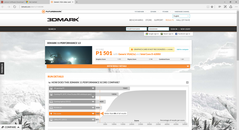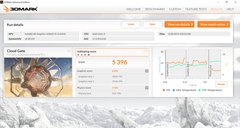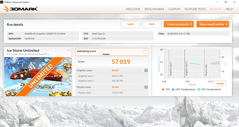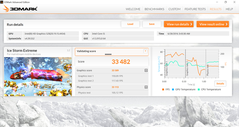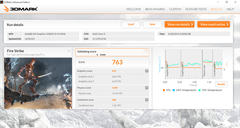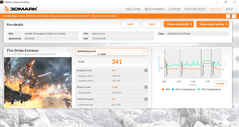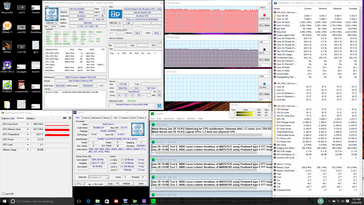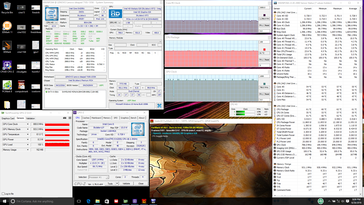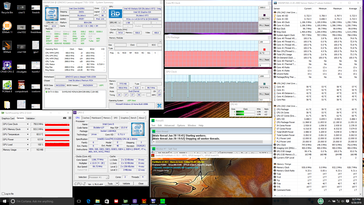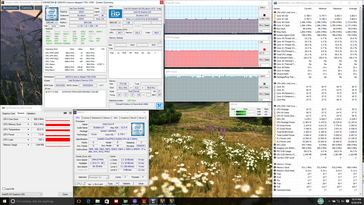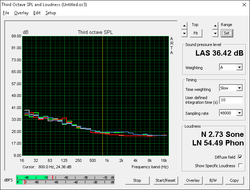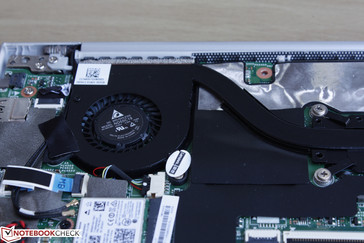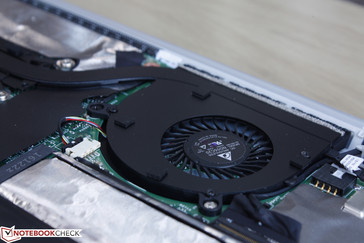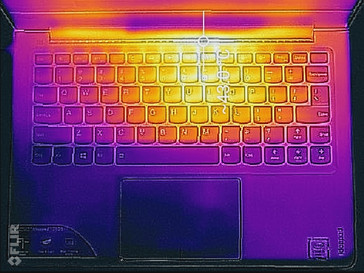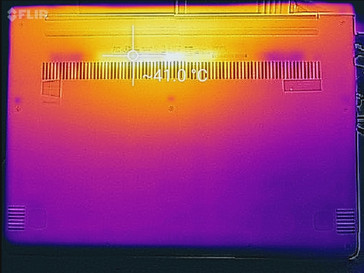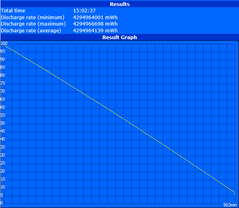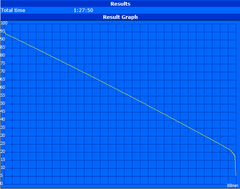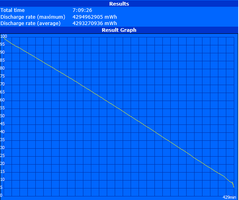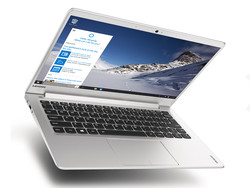Lenovo IdeaPad 710S-13ISK 80SW0031US Notebook Review
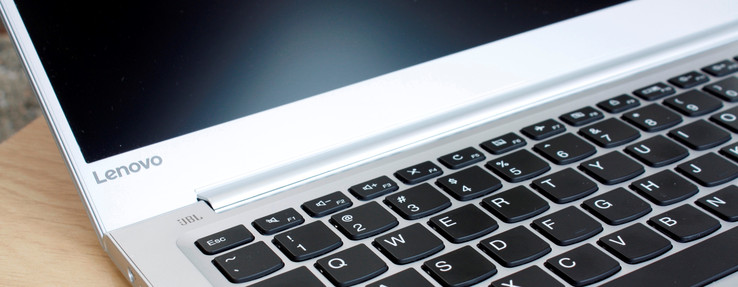
Unlike the Yoga 900, the Ideapad 700 series is Lenovo's mainstream offering without the fancy 360-degree hinges or touchscreen. The Ideapad 710S is a core notebook offering with specification options similar to those on the Spectre 13 or XPS 13, but at a much lower starting price of around $700 USD.
We last checked out the Ideapad 710S last month with its faster Core i7-6500U and 256 GB NVMe SSD. Our less expensive SKU for this second time around uses a Core i5-6200U and 128 GB SSD. We'll check to see if its performance is up to spec and if battery life and surface temperatures are improved due to the slightly slower CPU.
We recommend checking out our previous review on the Ideapad 710S for more pictures and additional information on its chassis, features, and input devices.
Case
The 710S is attractive with its thin aluminum and magnesium build. Its very narrow bezel of about 5 mm is a similar approach to what Dell has taken with the XPS 13 and XPS 15 refresh. Thus, its footprint is quite small when compared to most other 13.3-inch notebooks in the market.
Unfortunately for Lenovo, the rigidity of the system is a step down compared to the XPS 13. Our editor of our first 710S SKU claims an "almost perfect build quality", but this is false because the display is more susceptible to edge-to-edge twisting than average and the center of the keyboard can still be depressed when pushing down with a finger. While we wouldn't go so far as to call it flimsy, the lid feels weak due in part to its thinness and lack of any glass for improved rigidity. The bar hinge is otherwise strong up to its maximum 180-degree angle with no other major complaints about the base.
The 13.3-inch notebook is also one of the lightest in its size class at about 1.2 kg or about the same as the Spectre 13 and XPS 13. Even the higher-end Yoga 900 is slightly heavier and the Asus X302 with its dedicated Nvidia graphics is heavier still.
Connectivity
Available ports are fairly standard with a couple of USB ports and a SD reader. Our editor of the first Ideapad 710S SKU also lists a "mini-HDMI" port, but this is incorrect as the system includes a Micro-HDMI port and not a mini-HDMI port.
The system is noticeably missing a USB Type-C port that is becoming increasingly common on newer Ultrabooks and gaming systems. The option would have made the 710S more versatile for connecting newer devices and smartphones without resorting to adapters.
Communication
This particular SKU includes an Intel 8260 module for both WLAN 802.11ac and Bluetooth 4.2 as opposed to the Intel 3165 module in our previous 710S unit. We experienced no connectivity issues during our time with the unit. A quick Jperf client test paired with a Gigabit-enabled server through our 802.11ac 5 GHz Linksys EA8500 router resulted in a stable throughput of about 44.9 MB/s.
Accessories
There are no included extras outside of the usual warranty and service cards and AC adapter.
Maintenance
Our editor of the first Ideapad 710S SKU did not even attempt to open the bottom panel and only claimed that it was "easy" to remove due to the nine Philips head screws. Unfortunately, our editor has given incorrect information again as there are indeed twelve screws on the bottom with the extra three hidden underneath the rear rubber footing.
Removing the panel unveils the dual system fans, M.2 WLAN card, M.2 2280 SSD, and both batteries. RAM is soldered and cannot be upgraded.
Warranty
The standard one-year limited warranty applies to all new purchases. Lenovo offers extensive options with up to three years warranty and accidental damage protection for an additional $170 USD in the U.S..
Input Devices
Keyboard
The keys of the backlit Chiclet keyboard (26.6 x 10 cm) are shallower in travel and softer in feedback compared to the AccuType keyboards on newer ThinkPads. They aren't necessarily any quieter either, so expect some clatter when typing especially from the Space bar. The full-size Arrow keys in particular are large and easy to use, but the Enter key could have been larger and firmer when pressed. Note that the Power button is quite close to the Backspace key and is easy to press by accident.
Touchpad
The touchpad is large (10.5 x 7 cm) considering the screen size. The surface is smooth, though fingers tend to stick a bit in our experience. Otherwise, cursor control is smooth without any issues with multi-touch support up to four fingers. The integrated mouse keys take a fair amount of force to press and can be tiring after long periods. Thus, we find double-tapping to be easier on the 710S. Travel is otherwise shallow with a firm and auditory feedback when pressed.
Display
The matte 1080p display is the same Sharp LQ133M1JW15 panel as found on our previous configuration. Thus, unsurprisingly, our brightness and contrast measurements are nearly identical between the SKUs. Colors and texts are clean with no major graininess issues that can sometimes appear on matte panels. Slightly uneven backlight bleeding is noticeable on the bottom corners of our test unit, but it is not significant enough to be distracting during everyday workloads or during movie playback. Contrast levels are good, but not nearly as good as the flagship alternatives from Dell and HP.
| |||||||||||||||||||||||||
Brightness Distribution: 88 %
Center on Battery: 349 cd/m²
Contrast: 888:1 (Black: 0.393 cd/m²)
ΔE ColorChecker Calman: 6.85 | ∀{0.5-29.43 Ø4.78}
ΔE Greyscale Calman: 6.43 | ∀{0.09-98 Ø5}
97.3% sRGB (Argyll 1.6.3 3D)
61.9% AdobeRGB 1998 (Argyll 1.6.3 3D)
68% AdobeRGB 1998 (Argyll 3D)
97% sRGB (Argyll 3D)
65.9% Display P3 (Argyll 3D)
Gamma: 1.83
CCT: 7820 K
| Lenovo IdeaPad 710S-13ISK 80SW0031US 13.3", 1920x1080 | Dell XPS 13 2016 9350 (FHD, i7-6560U) 13.3", 1920x1080 | HP Spectre 13 13.3", 1920x1080 | Asus X302UV-FN016T 13.3", 1366x768 | Lenovo IdeaPad 710S-13ISK 13.3", 1920x1080 | |
|---|---|---|---|---|---|
| Display | -16% | -1% | -26% | 1% | |
| Display P3 Coverage (%) | 65.9 | 54.8 -17% | 65.6 0% | 48.37 -27% | 66.4 1% |
| sRGB Coverage (%) | 97 | 82.3 -15% | 94.7 -2% | 72.6 -25% | 97.5 1% |
| AdobeRGB 1998 Coverage (%) | 68 | 56.6 -17% | 67.5 -1% | 49.98 -26% | 68.4 1% |
| Response Times | 34% | 17% | 37% | 26% | |
| Response Time Grey 50% / Grey 80% * (ms) | 56 ? | 42.8 ? 24% | 50.8 ? 9% | 42 ? 25% | 52.4 ? 6% |
| Response Time Black / White * (ms) | 44 ? | 24.8 ? 44% | 33.2 ? 25% | 23 ? 48% | 23.6 ? 46% |
| PWM Frequency (Hz) | 219.3 ? | 50 ? | 220 ? | ||
| Screen | 31% | 26% | -11% | 4% | |
| Brightness middle (cd/m²) | 349 | 385 10% | 300.5 -14% | 218 -38% | 344 -1% |
| Brightness (cd/m²) | 339 | 350 3% | 305 -10% | 210 -38% | 326 -4% |
| Brightness Distribution (%) | 88 | 86 -2% | 76 -14% | 88 0% | 87 -1% |
| Black Level * (cd/m²) | 0.393 | 0.17 57% | 0.184 53% | 0.5 -27% | 0.36 8% |
| Contrast (:1) | 888 | 2265 155% | 1633 84% | 436 -51% | 956 8% |
| Colorchecker dE 2000 * | 6.85 | 4.17 39% | 2.64 61% | 3.89 43% | 6.09 11% |
| Colorchecker dE 2000 max. * | 10.27 | 7.61 26% | 5.06 51% | 7.11 31% | 10 3% |
| Greyscale dE 2000 * | 6.43 | 5.39 16% | 2.8 56% | 4.9 24% | 5.36 17% |
| Gamma | 1.83 120% | 2.12 104% | 2.16 102% | 2.41 91% | 2.01 109% |
| CCT | 7820 83% | 7404 88% | 6999 93% | 7860 83% | 7230 90% |
| Color Space (Percent of AdobeRGB 1998) (%) | 61.9 | 62.7 1% | 60.9 -2% | 46 -26% | 62.25 1% |
| Color Space (Percent of sRGB) (%) | 97.3 | 99.8 3% | 94.3 -3% | 73 -25% | 97.54 0% |
| Total Average (Program / Settings) | 16% /
22% | 14% /
20% | 0% /
-7% | 10% /
6% |
* ... smaller is better
Gamut is approximately 97 percent and 62 percent of the sRGB and AdobeRGB standard, respectively. This is similar to both the XPS 13 and Spectre 13 and is indicative of a high-end panel. Less expensive Ultrabooks may employ cheaper panels with 60 to 70 percent sRGB coverage instead. Users who demand high color accuracy for digital graphics work may find the 710S sufficient.
Additional measurements with an X-Rite spectrophotometer reveal only average colors and grayscale out-of-the-box. The screen benefits greatly from a quick calibration with better RGB Balance and more accurate colors across all tested saturation levels. Interestingly, Red and Orange colors are represented a bit less accurately than others according to our CalMan results.
Display Response Times
| ↔ Response Time Black to White | ||
|---|---|---|
| 44 ms ... rise ↗ and fall ↘ combined | ↗ 9.2 ms rise | |
| ↘ 34.8 ms fall | ||
| The screen shows slow response rates in our tests and will be unsatisfactory for gamers. In comparison, all tested devices range from 0.1 (minimum) to 240 (maximum) ms. » 98 % of all devices are better. This means that the measured response time is worse than the average of all tested devices (20.2 ms). | ||
| ↔ Response Time 50% Grey to 80% Grey | ||
| 56 ms ... rise ↗ and fall ↘ combined | ↗ 22 ms rise | |
| ↘ 34 ms fall | ||
| The screen shows slow response rates in our tests and will be unsatisfactory for gamers. In comparison, all tested devices range from 0.165 (minimum) to 636 (maximum) ms. » 92 % of all devices are better. This means that the measured response time is worse than the average of all tested devices (31.6 ms). | ||
Screen Flickering / PWM (Pulse-Width Modulation)
| Screen flickering / PWM detected | 219.3 Hz | ≤ 59 % brightness setting | |
The display backlight flickers at 219.3 Hz (worst case, e.g., utilizing PWM) Flickering detected at a brightness setting of 59 % and below. There should be no flickering or PWM above this brightness setting. The frequency of 219.3 Hz is relatively low, so sensitive users will likely notice flickering and experience eyestrain at the stated brightness setting and below. In comparison: 53 % of all tested devices do not use PWM to dim the display. If PWM was detected, an average of 8108 (minimum: 5 - maximum: 343500) Hz was measured. | |||
Outdoor visibility is above average due to the matte panel, relatively bright backlight, and wide 180-degree hinge. Working under shade is preferable as sunlight will still wash out colors and texts to make viewing uncomfortable for long periods.
Viewing angles are excellent as expected from an IPS panel. Colors and contrast do not degrade significantly unless if viewing from extreme angles. Apparent brightness still drops slightly if not looking directly at the screen.
Performance
Three SKUs are currently available in North America distinguished mainly by their CPU (i5-6200U vs. i7-6560U), RAM (8 GB LPDDR3 vs. 16 GB LPDDR3), and SSD (128 GB vs. 512 GB) options. The 1080p matte display is a fixed option between the configurations. Our test unit includes the ULV Core i5-6200U as commonly found on most other Ultrabooks.
RAM is soldered onto the motherboard, so heavy multi-taskers may want to consider the 16 GB SKU to give the system longer legs. Unfortunately, the 16 GB option is tied to the faster Core i7 CPU and higher capacity SSD in the U.S.. Thus, the jump from the base $700 SKU to the next configuration is a hefty $300 as of this writing.
Processor
CineBench R15 ranks the i5-6200U in our SKU about 14 to 18 percent slower than the pricier SKU with the i7-6560U processor option. Performance is also slightly slower than the similarly equipped HP ProBook 430 likely because of the more limited Turbo Boost potential of the Ideapad 710S as detailed in our Stress Test section below. In general, however, raw processor performance from the i5-6200U is not significantly different from the Broadwell i5-5200U or Haswell i5-4200U.
See our dedicated CPU page on the Core i5-6200U for more technical details and benchmark comparisons.
| Cinebench R15 | |
| CPU Single 64Bit (sort by value) | |
| Lenovo IdeaPad 710S-13ISK 80SW0031US | |
| Asus Strix GL502VY-DS71 | |
| Lenovo IdeaPad 710S-13ISK | |
| HP ProBook 430 G3 P4N86EA | |
| Acer TravelMate P648-M-757N | |
| Lenovo IdeaPad Z40-59422614 | |
| Toshiba Tecra A50-C1510W10 | |
| CPU Multi 64Bit (sort by value) | |
| Lenovo IdeaPad 710S-13ISK 80SW0031US | |
| Asus Strix GL502VY-DS71 | |
| Lenovo IdeaPad 710S-13ISK | |
| HP ProBook 430 G3 P4N86EA | |
| Acer TravelMate P648-M-757N | |
| Lenovo IdeaPad Z40-59422614 | |
| Toshiba Tecra A50-C1510W10 | |
| Cinebench R11.5 | |
| CPU Single 64Bit (sort by value) | |
| Lenovo IdeaPad 710S-13ISK 80SW0031US | |
| Asus Strix GL502VY-DS71 | |
| HP ProBook 430 G3 P4N86EA | |
| Acer TravelMate P648-M-757N | |
| Lenovo IdeaPad Z40-59422614 | |
| Toshiba Tecra A50-C1510W10 | |
| CPU Multi 64Bit (sort by value) | |
| Lenovo IdeaPad 710S-13ISK 80SW0031US | |
| Asus Strix GL502VY-DS71 | |
| HP ProBook 430 G3 P4N86EA | |
| Acer TravelMate P648-M-757N | |
| Lenovo IdeaPad Z40-59422614 | |
| Toshiba Tecra A50-C1510W10 | |
| Cinebench R10 | |
| Rendering Multiple CPUs 32Bit (sort by value) | |
| Lenovo IdeaPad 710S-13ISK 80SW0031US | |
| Asus Strix GL502VY-DS71 | |
| HP ProBook 430 G3 P4N86EA | |
| Acer TravelMate P648-M-757N | |
| Lenovo IdeaPad Z40-59422614 | |
| Toshiba Tecra A50-C1510W10 | |
| Rendering Single 32Bit (sort by value) | |
| Lenovo IdeaPad 710S-13ISK 80SW0031US | |
| Asus Strix GL502VY-DS71 | |
| HP ProBook 430 G3 P4N86EA | |
| Acer TravelMate P648-M-757N | |
| Lenovo IdeaPad Z40-59422614 | |
| Toshiba Tecra A50-C1510W10 | |
| wPrime 2.10 - 1024m (sort by value) | |
| Lenovo IdeaPad 710S-13ISK 80SW0031US | |
| Asus Strix GL502VY-DS71 | |
| HP ProBook 430 G3 P4N86EA | |
| Lenovo IdeaPad Z40-59422614 | |
| Toshiba Tecra A50-C1510W10 | |
| Super Pi Mod 1.5 XS 32M - 32M (sort by value) | |
| Lenovo IdeaPad 710S-13ISK 80SW0031US | |
| Asus Strix GL502VY-DS71 | |
| HP ProBook 430 G3 P4N86EA | |
| Lenovo IdeaPad Z40-59422614 | |
| Toshiba Tecra A50-C1510W10 | |
* ... smaller is better
System Performance
| PCMark 8 Home Score Accelerated v2 | 3414 points | |
| PCMark 8 Creative Score Accelerated v2 | 4058 points | |
| PCMark 8 Work Score Accelerated v2 | 4339 points | |
Help | ||
Storage Devices
A single internal M.2 slot is available for internal storage. While the Ideapad 710S model supports NVMe SSDs, our specific configuration comes with a 128 GB Samsung MZNLN128HCGR-000L2 M.2 SSD instead of the 256 GB NVMe-capable Samsung PM951 MZVLV256 as found on our pricier SKU.
Performance from the M.2 SSD is nothing special with an average sequential read rate of around 500 MB/s as to be expected from a SATA III drive. Sequential write rate is slow for an SSD at about 150 MB/s, so there are definitely faster SATA III SSDs available. The NVMe SSD in the higher-end Lenovo SKU outperforms this system on essentially all fronts.
See our growing table of SSDs and HDDs for more benchmarks and comparisons.
| Lenovo IdeaPad 710S-13ISK 80SW0031US HD Graphics 520, 6200U, Samsung MZNLN128HCGR-000L2 | Dell XPS 13 2016 9350 (FHD, i7-6560U) Iris Graphics 540, 6560U, Samsung PM951 NVMe MZ-VLV256D | HP Spectre 13 HD Graphics 520, 6500U, Samsung PM951 NVMe MZVLV256 | Asus X302UV-FN016T GeForce 920MX, 6200U, Hynix HFS128G3MND | Lenovo IdeaPad 710S-13ISK Iris Graphics 540, 6560U, Samsung PM951 NVMe MZVLV256 | |
|---|---|---|---|---|---|
| AS SSD | 44% | 92% | -22% | 94% | |
| Copy Game MB/s (MB/s) | 145.1 | 178.2 23% | 239 65% | 156.7 8% | |
| Copy Program MB/s (MB/s) | 131.7 | 98.1 -26% | 262.3 99% | 117.1 -11% | |
| Copy ISO MB/s (MB/s) | 200.2 | 222.3 11% | 352.8 76% | 218.7 9% | |
| Score Total (Points) | 919 | 1684 83% | 2335 154% | 711 -23% | 2286 149% |
| Score Write (Points) | 241 | 318 32% | 382 59% | 239 -1% | 429 78% |
| Score Read (Points) | 452 | 935 107% | 1325 193% | 318 -30% | 1257 178% |
| Access Time Write * (ms) | 0.041 | 0.035 15% | 0.035 15% | 0.075 -83% | 0.031 24% |
| Access Time Read * (ms) | 0.07 | 0.088 -26% | 0.047 33% | 0.135 -93% | 0.073 -4% |
| 4K-64 Write (MB/s) | 141.9 | 186.3 31% | 248.4 75% | 160 13% | 282.8 99% |
| 4K-64 Read (MB/s) | 370 | 767 107% | 1153 212% | 252.4 -32% | 1091 195% |
| 4K Write (MB/s) | 84 | 108.3 29% | 103.7 23% | 62.2 -26% | 117.2 40% |
| 4K Read (MB/s) | 33.24 | 35.4 6% | 37.06 11% | 18.6 -44% | 39.13 18% |
| Seq Write (MB/s) | 150.6 | 235.3 56% | 295.5 96% | 171 14% | 294 95% |
| Seq Read (MB/s) | 486.3 | 1323 172% | 1347 177% | 474.4 -2% | 1273 162% |
* ... smaller is better
GPU Performance
The integrated HD Graphics 520 is common on Ultrabooks from the budget end all to way to up to flagship models. 3DMark Fire Strike and Cloud Gate benchmarks place this specific configuration at about the same performance level to the previous generation HD Graphics 5500. Users opting in for the pricier 710S SKU with integrated Iris Graphics 540 will see a 70 percent gain in raw graphics power over the HD Graphics 520 according to Cloud Gate. Users who are still chugging along with HD Graphics 4600 GPUs in older Haswell systems will see an 84 percent increase in performance according to 3DMark 11 Graphics.
See our dedicated GPU page on the HD Graphics 520 for more technical details and benchmark comparisons.
| 3DMark 11 | |
| 1280x720 Performance GPU (sort by value) | |
| Lenovo IdeaPad 710S-13ISK 80SW0031US | |
| Intel Skull Canyon NUC6i7KYK | |
| Lenovo IdeaPad 710S-13ISK | |
| Lenovo ThinkPad Yoga 12 20DK002EPB | |
| Fujitsu Lifebook E544 | |
| Lenovo B50-70 MCC2GGE | |
| 1280x720 Performance Combined (sort by value) | |
| Lenovo IdeaPad 710S-13ISK 80SW0031US | |
| Intel Skull Canyon NUC6i7KYK | |
| Lenovo IdeaPad 710S-13ISK | |
| Lenovo ThinkPad Yoga 12 20DK002EPB | |
| Fujitsu Lifebook E544 | |
| Lenovo B50-70 MCC2GGE | |
| 3DMark | |
| 1280x720 Cloud Gate Standard Graphics (sort by value) | |
| Lenovo IdeaPad 710S-13ISK 80SW0031US | |
| Intel Skull Canyon NUC6i7KYK | |
| Lenovo IdeaPad 710S-13ISK | |
| Lenovo ThinkPad Yoga 12 20DK002EPB | |
| Fujitsu Lifebook E544 | |
| Lenovo B50-70 MCC2GGE | |
| 1920x1080 Fire Strike Graphics (sort by value) | |
| Lenovo IdeaPad 710S-13ISK 80SW0031US | |
| Intel Skull Canyon NUC6i7KYK | |
| Lenovo ThinkPad Yoga 12 20DK002EPB | |
| Lenovo B50-70 MCC2GGE | |
| 1920x1080 Ice Storm Extreme Graphics (sort by value) | |
| Lenovo IdeaPad 710S-13ISK 80SW0031US | |
| Intel Skull Canyon NUC6i7KYK | |
| 3DMark 11 Performance | 1501 points | |
| 3DMark Ice Storm Standard Score | 44672 points | |
| 3DMark Cloud Gate Standard Score | 5396 points | |
| 3DMark Fire Strike Score | 763 points | |
| 3DMark Fire Strike Extreme Score | 341 points | |
Help | ||
Gaming Performance
The HD Graphics 520 is not built for heavy gaming and is unable to play many demanding 3D titles unless if on the lowest graphical settings. Top-down games like DOTA 2, LoL, or Starcraft II should play decently on Low settings and on the native 1080p resolution.
| BioShock Infinite - 1366x768 High Preset | |
| Asus F555LB-XO401H | |
| Lenovo IdeaPad 710S-13ISK | |
| Acer Aspire Switch Alpha 12 SA5-271-56HM | |
| Lenovo IdeaPad 710S-13ISK 80SW0031US | |
| Fujitsu Lifebook E544 | |
| Acer Aspire Switch 12S SW7-272-M3A0 | |
| low | med. | high | ultra | |
|---|---|---|---|---|
| BioShock Infinite (2013) | 47.3 | 25.8 | 21.5 | 6.3 |
| Metro: Last Light (2013) | 23.5 | 19.1 | 12.1 | |
| Overwatch (2016) | 35.1 | 25 | 14.7 |
Stress Test
We stress the notebook with synthetic benchmarks to identify for any throttling or stability issues. When under Prime95 stress, the i7-6200U is able to maintain a constant clock rate of 2.5 GHz or 300 MHz above its base clock rate. Nonetheless, this is still 200 MHz below its rated Turbo Boost maximum for multi-threaded workloads, so the system is only able to sustain a fraction of its Turbo Boost potential. The CPU unfortunately throttles even further when subjected to Unigine Valley stress in favor of maintaining a higher GPU clock rate of 900 to 950 MHz. Core temperature remains quite cool in the low 60 C range when under load.
Running on battery power will not incur major performance penalties. A 3DMark 11 run on batteries returned Physics and Graphics scores 3742 points and 1360 points, respectively, compared to 3748 points and 1372 points when connected to mains.
| CPU Clock (GHz) | GPU Clock (MHz) | Average CPU Temperature (C) | |
Prime95 Stress |
2.5 | -- | 65 |
FurMark Stress |
-- | 800 | 61 |
Prime95 + FurMark Stress |
1.2 | 700 - 750 | 61 |
Unigine Valley Stress |
1.5 | 900 - 950 | 62 |
Emissions
System Noise
The cooling system consists of two asymmetrical fans and a single heat pipe between them. This is actually quite large for a compact 13.3-inch notebook as competing models like the XPS 13 or Asus X302 have just a single fan and a much shorter heat pipe each for steeper surface temperature gradients.
Fan noise is consequently silent when idling or under very low loads and bumps up to just 31 to 32 dB(A) when under moderate loads like heavy browsing and multi-tasking. Gaming or extreme stress with Prime95 and FurMark will produce a constant fan noise of about 34 dB(A), which is still quite low. Note that the higher-end SKU with Iris graphics runs much louder under similar conditions since the same fans must now cool a much more powerful graphics processor.
| Lenovo IdeaPad 710S-13ISK 80SW0031US HD Graphics 520, 6200U, Samsung MZNLN128HCGR-000L2 | Dell XPS 13 2016 9350 (FHD, i7-6560U) Iris Graphics 540, 6560U, Samsung PM951 NVMe MZ-VLV256D | HP Spectre 13 HD Graphics 520, 6500U, Samsung PM951 NVMe MZVLV256 | Asus X302UV-FN016T GeForce 920MX, 6200U, Hynix HFS128G3MND | Lenovo IdeaPad 710S-13ISK Iris Graphics 540, 6560U, Samsung PM951 NVMe MZVLV256 | |
|---|---|---|---|---|---|
| Noise | -4% | -7% | -7% | -6% | |
| off / environment * (dB) | 29.5 | 30 -2% | 28.5 3% | 31.2 -6% | 29 2% |
| Idle Minimum * (dB) | 29.5 | 30 -2% | 28.5 3% | 32.9 -12% | 30.1 -2% |
| Idle Average * (dB) | 29.5 | 30 -2% | 30.9 -5% | 32.9 -12% | 30.1 -2% |
| Idle Maximum * (dB) | 29.5 | 30 -2% | 31.6 -7% | 33 -12% | 30.1 -2% |
| Load Average * (dB) | 34.2 | 36.5 -7% | 38.8 -13% | 33 4% | 39.2 -15% |
| Load Maximum * (dB) | 34.4 | 38.3 -11% | 41.4 -20% | 34.6 -1% | 39.3 -14% |
* ... smaller is better
Noise level
| Idle |
| 29.5 / 29.5 / 29.5 dB(A) |
| Load |
| 34.2 / 34.4 dB(A) |
 | ||
30 dB silent 40 dB(A) audible 50 dB(A) loud |
||
min: | ||
Temperature
Surface temperature development is concentrated towards the rear of the unit closer to the heat pipes and processor. The palm rests and keyboard keys remain relatively cool when browsing or word processing. The Function keys will become warm under heavy loads, but they are not used frequently enough to be uncomfortable. The WASD keys and frontal quadrants remain cool when gaming or when using the notebook of the lap. Temperatures are notably cooler on the underside of the system compared to the faster Ideapad 710S SKU with Iris graphics. Systems like the XPS 13 and Spectre 13 run warmer under similar conditions.
(±) The maximum temperature on the upper side is 43 °C / 109 F, compared to the average of 35.9 °C / 97 F, ranging from 21.4 to 59 °C for the class Subnotebook.
(±) The bottom heats up to a maximum of 41.2 °C / 106 F, compared to the average of 39.3 °C / 103 F
(+) In idle usage, the average temperature for the upper side is 24 °C / 75 F, compared to the device average of 30.8 °C / 87 F.
(+) The palmrests and touchpad are cooler than skin temperature with a maximum of 26.8 °C / 80.2 F and are therefore cool to the touch.
(±) The average temperature of the palmrest area of similar devices was 28.2 °C / 82.8 F (+1.4 °C / 2.6 F).
Speakers
The JBL stereo speakers make up for their lack of bass with good midtones, no static or distortions, and high maximum volume. Lower frequency sounds are indeed better reproduced on the Lenovo compared to the speakers on the thinner Spectre 13.
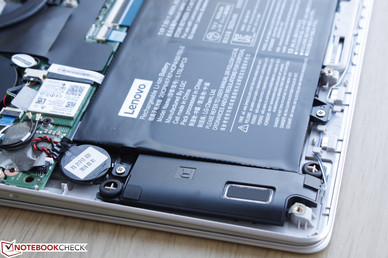
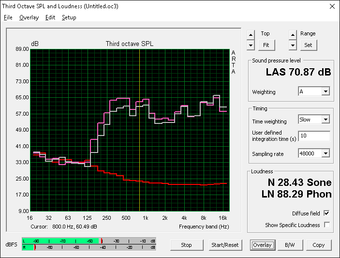
Energy Management
Power Consumption
The system draws about the same amount of power as the costlier and faster SKU under low or idling loads. When under more demanding loads like gaming, however, the system demands about 10 W less in comparison. Maximum load with both Prime95 and FurMark active will demand about 38 W of power, which is more than both the XPS 13 and Spectre 13. Throttling can have a large effect on power consumption when under sustained maximum loads.
The small power adapter (6.25 x 6.25 x 2.75 cm) is rated for a maximum of 45 W, so it is sufficient for the system if just barely.
| Lenovo IdeaPad 710S-13ISK 80SW0031US HD Graphics 520, 6200U, Samsung MZNLN128HCGR-000L2 | Dell XPS 13 2016 9350 (FHD, i7-6560U) Iris Graphics 540, 6560U, Samsung PM951 NVMe MZ-VLV256D | HP Spectre 13 HD Graphics 520, 6500U, Samsung PM951 NVMe MZVLV256 | Asus X302UV-FN016T GeForce 920MX, 6200U, Hynix HFS128G3MND | Lenovo IdeaPad 710S-13ISK Iris Graphics 540, 6560U, Samsung PM951 NVMe MZVLV256 | |
|---|---|---|---|---|---|
| Power Consumption | -6% | -38% | 14% | -5% | |
| Idle Minimum * (Watt) | 4.8 | 5.8 -21% | 8.6 -79% | 3.3 31% | 3.3 31% |
| Idle Average * (Watt) | 7.7 | 7.3 5% | 11 -43% | 5.1 34% | 7.4 4% |
| Idle Maximum * (Watt) | 7.9 | 8.5 -8% | 11.3 -43% | 5.2 34% | 8.2 -4% |
| Load Average * (Watt) | 25.8 | 30.6 -19% | 33.8 -31% | 29.5 -14% | 36.5 -41% |
| Load Maximum * (Watt) | 38.1 | 32.5 15% | 36.2 5% | 44 -15% | 43.7 -15% |
* ... smaller is better
| Off / Standby | |
| Idle | |
| Load |
|
Key:
min: | |
Battery Life
Runtimes are not significantly longer on our less powerful configuration compared to the costlier SKU with Iris graphics. We clocked in at about 7 hours of constant WLAN use each between our two configurations under similar conditions. This is comparable to the Dell XPS 13 and its larger battery capacity while being much longer than the recent Spectre 13.
Charging from near empty to full capacity will take about 2 hours.
| Lenovo IdeaPad 710S-13ISK 80SW0031US 46 Wh | Dell XPS 13 2016 9350 (FHD, i7-6560U) 56 Wh | HP Spectre 13 38 Wh | Asus X302UV-FN016T 38 Wh | Lenovo IdeaPad 710S-13ISK 46 Wh | |
|---|---|---|---|---|---|
| Battery runtime | 22% | -19% | -10% | -5% | |
| Reader / Idle (h) | 15.1 | 15.7 4% | 11.9 -21% | 13.5 -11% | |
| WiFi v1.3 (h) | 7.2 | 7.3 1% | 5.6 -22% | 6.5 -10% | 7 -3% |
| Load (h) | 1.5 | 2.4 60% | 1.3 -13% | 1.5 0% |
Pros
Cons
Verdict
Perhaps the most noticeable advantage of the Ideapad 710S over the Yoga 900, Spectre 13, MacBook Air 13, or XPS 13 is its lower cost. Its base SKU like the one we have here offers a very lightweight and small package due to its narrow bezel for hundreds less. This makes the Lenovo an attractive alternative to users who are drawn by other pricier 13.3-inch notebooks for their size and portability. The display in particular is excellent and not unlike on other flagship notebooks in terms of color accuracy and reproduction.
Battery runtimes are not significantly different from the more expensive 710S SKU with Intel Iris 540 Graphics, but fan noise is definitely louder on the latter when under heavier processing loads. Our biggest gripes with the notebook are its flexible lid and soft feedback from the keyboard keys that can take some getting used to. The lack of a USB Type-C port further separates the mainstream 710S from the aforementioned 13.3-inch notebooks.
The Ideapad 710S excels as a core Ultrabook with its bright 1080p IPS display, respectable battery life, and small size. Its higher-end SKUs are very pricey to the point where higher-end alternatives like the Yoga 900, XPS 13, or Spectre 13 can be considered better choices for the cost.
Lenovo IdeaPad 710S-13ISK 80SW0031US
- 07/05/2016 v5.1 (old)
Allen Ngo




